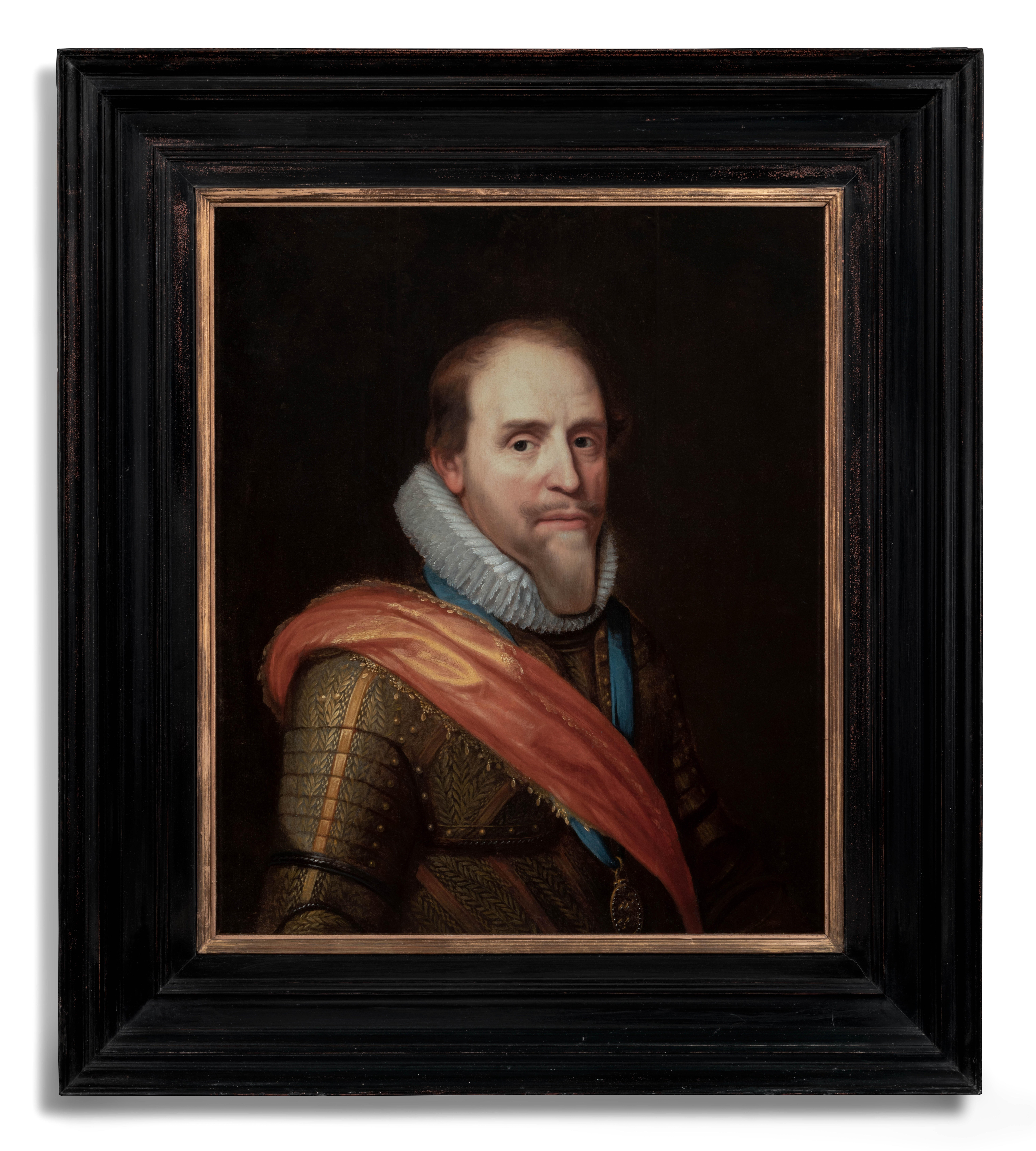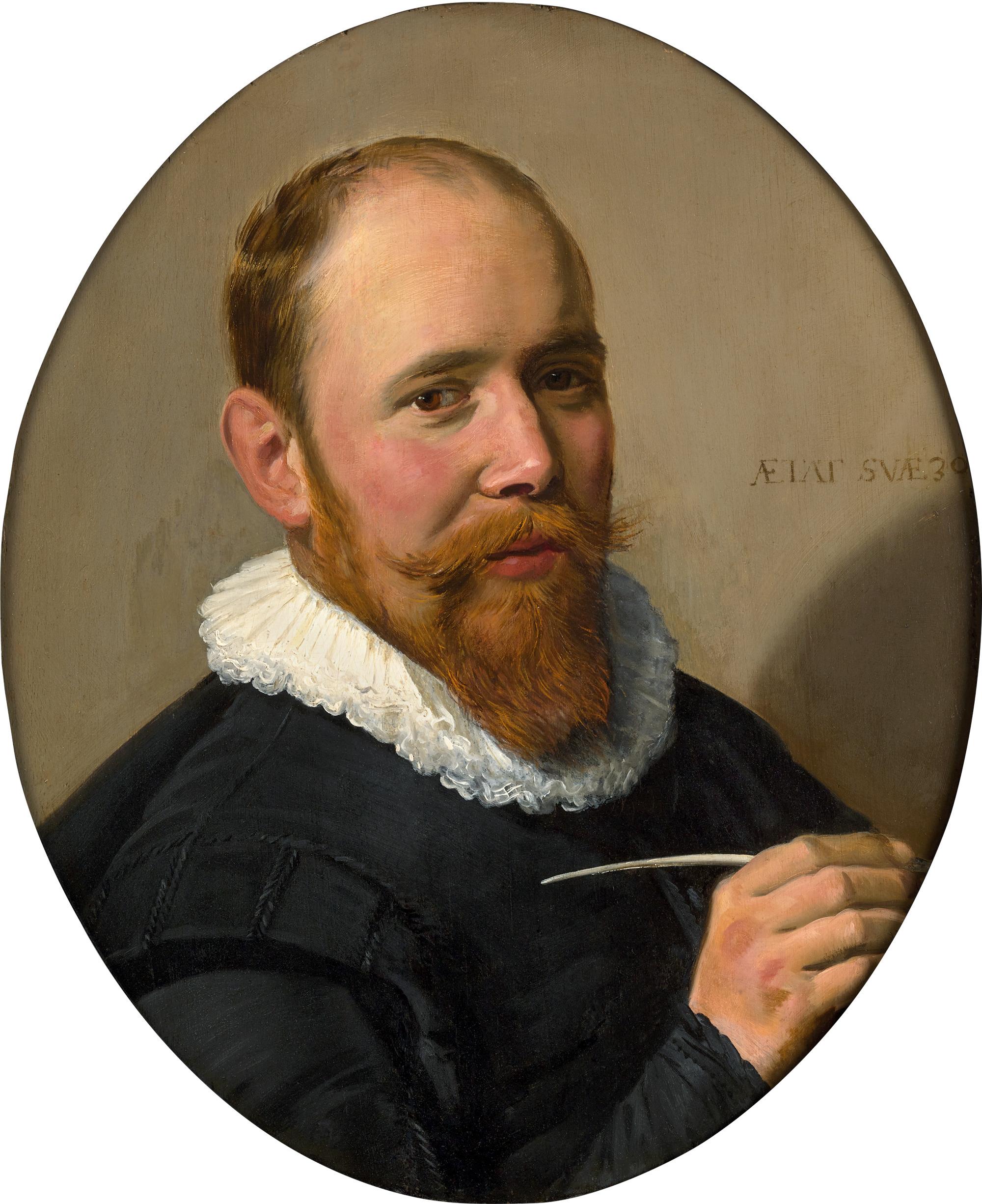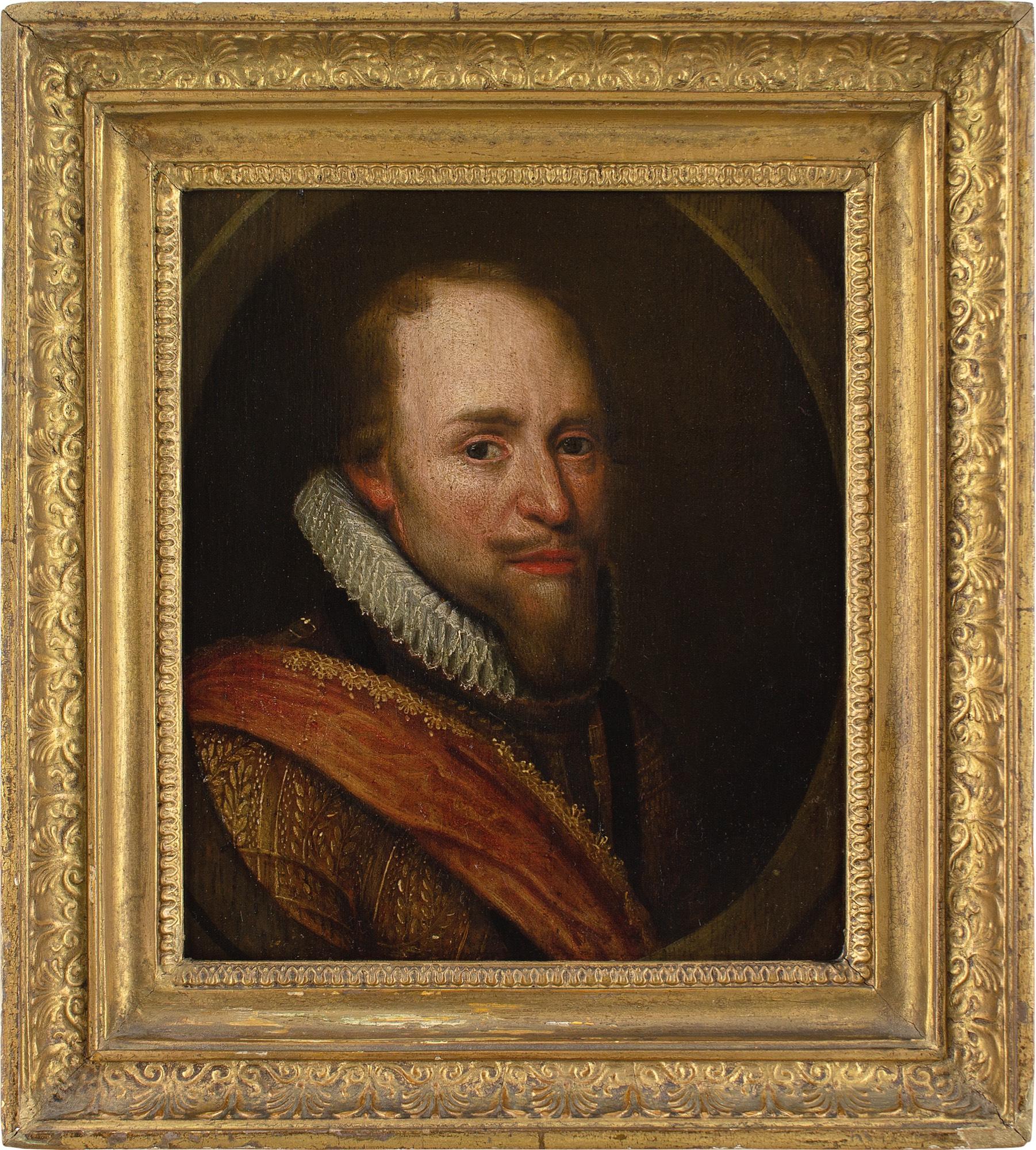Items Similar to Portrait of three children - Bernhard Keil (1624-1687)
Want more images or videos?
Request additional images or videos from the seller
1 of 7
Bernhard KeilPortrait of three children - Bernhard Keil (1624-1687)
About the Item
“A portrait of three children, one of them holding a basket of grapes, while another plays the flute”
Oil on canvas
Housed in a blackened 17th-century frame.
We'd like to thank dr. Fred Meijer and dr. Guido Jansen for their advice.
Dimensions: 70 x 95 cm
Bernhard Keil (Eberhard Keilhau) was a Danish painter, he was the first painter from his country to enjoy more than a local reputation. Keil studied in Copenhagen and then with Rembrandt in Amsterdam, c. 1642-44. In 1651 he moved to Italy, where he lived for the rest of his life, settling in Rome in 1656.
Life-size genre pictures of a few figures were his speciality. His themes are often related to simple allegorical subjects such as the Five Senses, the Seasons, and the Four Elements, and as protagonists he favored dignified old people or children dressed in old clothes and rags. Keil provided Filippo Baldinucci with information about Rembrandt that he used in his book on engraving and etching (1686).
The innocence and joy of childhood comes alive as Keil skillfully captures the essence of three children in a moment of playful camaraderie. The scene unfolds with an intimate focus on their faces, allowing viewers to connect with the charming personalities depicted.
On the left side of the canvas, a girl graces the composition with her presence. Clutching an apple, she exudes a gentle blush, her kind eyes reflecting a sense of sweetness and simplicity. Her brown hair, elegantly arranged in a simple up-do, frames her visage. Adorned in pink and blue attire, she adds a touch of delicate femininity to the trio.
Seated beside her is a boy, perched on a chair and holding a basket of grapes. His face radiates warmth and kindness, mirroring the genuine innocence of childhood. Dressed in a hat, purple and blue clothing, and vibrant red pants, he introduces a playful contrast.
Completing the trio on the right side is another boy, wearing a hat and brown clothing. Engrossed in the melodic pursuit of playing the flute, his lips press against the instrument's head, creating a whimsical visual symphony. His focused expression and the dynamic posture suggest a moment frozen in time, capturing the fleeting joy of childhood pursuits.
Keil's mastery lies not only in the detailed rendering of each child but also in the collective narrative woven through their interactions. The close-up perspective ensures an intimate connection between the viewer and these youthful personalities, inviting contemplation on the universal themes of innocence, playfulness, and the timeless charm of childhood.
- Creator:Bernhard Keil (1624 - 1687, Dutch)
- Dimensions:Height: 28.75 in (73 cm)Width: 38.19 in (97 cm)
- Medium:
- Movement & Style:
- Period:
- Condition:
- Gallery Location:Gent, BE
- Reference Number:1stDibs: LU2239214315052
About the Seller
No Reviews Yet
Vetted Seller
These experienced sellers undergo a comprehensive evaluation by our team of in-house experts.
Established in 1999
1stDibs seller since 2022
- ShippingRetrieving quote...Ships From: Gent, Belgium
- Return PolicyThis item cannot be returned.
More From This SellerView All
- A praying elderly woman by Quiringh Van Brekelenkam (1622-1669)Located in Gent, BEOil on panel Signed and dated lower left. Quiringh van Brekelenkam was a Dutch genre painter, who studied under Gerard Dou. As a result, his paintings from the 1640s and 50s are si...Category
17th Century Old Masters Portrait Paintings
MaterialsOil, Panel
- Two portraits, one of a man and one of a lady - Jan van RavensteynLocated in Gent, BEOil on panel Jan van Ravesteyn was described as an outstanding portrait painter by Karel van Mander as early as 1604. After a possible apprenticeshi...Category
17th Century Dutch School Portrait Paintings
MaterialsOil, Wood Panel
- Portrait of a bearded man - Adriaen Thomasz. Key (c. 1544-1589)Located in Gent, BEOil on panel We are grateful to Koenraad Jonckheere for confirming the attribution after inspection of the original. He dates the work to circa 1570. The present portrait of a bearded man, arresting in its intimacy, capturing the contemplative gaze of the sitter, along with the intense naturalism with which his face is rendered, is an outstanding example of the oeuvre of the Antwerp master Adriaen Thomasz. Key. Attired in an expensive and modish ‘Burgundian black’ doublet...Category
16th Century Flemish School Portrait Paintings
MaterialsOil, Panel
- A portrait of a young boy and Johanna van den Brande - Nicholas MaesLocated in Gent, BEA portrait of a young boy holding a hunting spear and carving words into a tree and A portrait of Johanna van den Brande (1668-1691) - - Nicolaes Maes Oil on canvas The composition of our portrait of a young boy, holds a close resemblance to two other portraits painted by Maes. The first one was to be seen at Woolley and Wallace, in august 2021. It portrayed a young man, older than our boy, in a Japanese rok, also holding a hunting spear and carving words into a tree. The second one is a portrait of Christiaan van...Category
17th Century Dutch School Portrait Paintings
MaterialsCanvas, Oil
- Christine de France, duchesse de Savoi - Franco-Flemish school (17th C.)Located in Gent, BEA portrait of Christine de France, duchesse de Savoi, made with oil paint on canvas. Christine Marie of France (10 February 1606 – 27 December 1663) was Duchess of Savoy from 26 Ju...Category
17th Century Flemish School Portrait Paintings
MaterialsOil
- Portrait of a child holding peaches - Jacob Gerritsz. Cuyp (1594-1652)Located in Gent, BEOil on panel Portrait of a child holding peaches, accompanied by a dog. We are grateful to Fred Meijer for confirming the attribution on the basis of high-resolution photographs. The present portrayal of a silk-robed child, attended by a pedigree puppy and holding a sprig of expensive, exotic fruit, exudes the burgeoning wealth of the mid-17th century Dutch Republic, and is characteristic of the accomplished hand of Jacob Gerritsz. Cuyp. The sex of the present child is difficult to determine with certainty, as young boys also were attired in dresses at this time, but the silk bonnet...Category
17th Century Dutch School Portrait Paintings
MaterialsOil
You May Also Like
- Portrait of a ManBy Cornelis DusartLocated in London, GBCircle of Cornelis Dusart Dutch 1660 - 1704 Portrait of a Man Oil on panel Image size: 7¾ x 5¼ inches Giltwood frame Cornelis Dusart Cornelis ...Category
17th Century Old Masters Portrait Paintings
MaterialsPanel, Oil
- Portrait of a Young Man - 17th Century Portrait in OilBy Pieter Harmensz VerelstLocated in London, GBCircle of Pieter Harmensz Verelst 1618 - 1678 Portrait of a Young Man Oil on oak panel Image size: 7 ½ x 5 ¾ inches Dutch ripple frameCategory
18th Century and Earlier Old Masters Portrait Paintings
MaterialsPanel, Oil
- Dutch Old Master Portrait of Maurits, Prince of Orange-Nassau, Oil on PanelLocated in London, GBIn 1607, the Delft city council decided to commission a portrait of Stadholder Maurits of Nassau for the town hall, with Michiel van Mierevelt as the chosen artist due to the passing...Category
17th Century Old Masters Portrait Paintings
MaterialsOil, Wood Panel
- Portrait Of A Gentleman By Frans HalsLocated in New Orleans, LAFrans Hals 1582-1666 Dutch Portrait of a Gentleman (possibly Theodore Blevet) Oil on panel “Frans Hals is a colourist among the colourists...Frans Hals must have had twenty-seven blacks...Category
17th Century Old Masters Portrait Paintings
MaterialsOil, Panel
- Portrait of a Lady in an Elaborate Ruff & Lace Coif c.1610-20, Dutch Old MasterLocated in London, GBThis magnificent oil on panel portrait, presented by Titan Fine Art, is a splendid example of the sumptuous female portraits that were painted for members of the upper echelons of society during the early part of the 1600’s. The artist has rendered this portrait with meticulous attention to detail and the surface effects of the fine materials. The elaborate lace coif and cuffs are painstakingly delineated, as is the bold black damask, and sumptuous gold decoration of her skirt and stomacher, which is wonderfully preserved and quite remarkable considering the age of the work and the fact that darker pigments are particularly vulnerable to fading and wear. This work with its spectacular depiction of costume is of absolute quality, it can be rated as one of the best works in the artist’s oeuvre and as such it is an important and splendid example of Dutch portraiture. The Dutch Golden Age of painting was a period in Dutch history, roughly spanning the 17th century, in which Dutch trade, science, military, and art were among the most acclaimed in the world. Dutch explorers charted new territory and settled abroad. Trade by the Dutch East-India Company thrived, and war heroes from the naval battles were decorated and became national heroes. During this time, The Dutch Old Masters began to prevail in the art world, creating a depth of realistic portraits of people and life in the area that has hardly been surpassed. The Golden Age painters depicted the scenes that their discerning new middleclass patrons wanted to see. This new wealth from merchant activities and exploration combined with a lack of church patronage, shifted art subjects away from biblical genres. Dress was a key component in portraits, and the exuberant attire reiterates the incredible wealth of this woman. The sitter will have visited the artist’s workshop and inspected examples on display. They would have chosen the size and the sort of composition and on that basis negotiated the price – which would have also been determined by the complexity of the clothing and the jewels that were to be depicted, and by the materials to be used. When all was considered, this portrait would have cost the sitter (or her husband) a substantial sum. The colour black was regarded as humble and devout yet at the same time refined and sophisticated and the most expensive colour of fabric to dye and to maintain. Citizens spent fortunes on beautiful black robes. Such uniformity must also have had a psychological side-effect and contributed to a sense of middle-class cohesion; the collective black of the well-to-do burgess class will have given its members a sense of solidarity. The colour was always an exciting one for artists and when this portrait was painted there were at least fifty shades of it, and as many different fabrics and accoutrements. Artists went to great lengths to depict the subtle nuances of the colour and the fabrics and textures and how they reflected light and it was an ideal background against which gold and crisp white lace could be juxtaposed to dramatic effect. The sitter is either a married women or a widower as is evident by the clothing that she wears and the position, toward her right, it is highly likely that this portrait was once a pendant that hung on the right-hand side of her husband’s portrait as was convention at the time. She wears a vlieger which was a type of sleeveless over-gown or cape worn by well-to-do married women in the late 16th and early 17th centuries. Variations with short sleeves or high shoulder rolls are known. Sometimes sleeves were attached with aiglets, and often slits were made to allow belts or the hands to pass through. Three-piece vlieger costumes of this kind were standard items of clothing in portraits of the women of the civic elite in the period 1600-40 and was a variant of the Spanish ‘ropa’ and served as a trademark of well-to-do married burgher women. Girls and unmarried woman, including beguines, wore a bouwen (a dress with a fitted bodice and a skirt that was closed all round) instead. This clear distinction between apparel for married and unmarried women is clear not only from inventories and trousseau lists, but also from contemporary sources such as the Dutch Spanish dictionary published by Juan Rodrigues in 1634. In it, a bouwen is described as a ‘ropa de donzella’ (over-gown worn by a virgin) and a vlieger as a ‘ropa de casada’ (overgown worn by a married woman). It is striking how few women are depicted wearing a bouwen, unless they are part of a group, family or children’s portrait and it can therefore be assumed that independent portraits of unmarried women were seldom commissioned. It is also believed that the clothing worn in these portraits existed and were faithfully reproduced when cross-referenced with the few exact documents. These sources also demonstrate that clients wanted their clothing to be depicted accurately and with this in mind precious garments and jewels were often left in the painter’s studio. The prominent white lawn molensteenkraag (or millstone ruff) is held up by a wire supportasse and was reserved only for the citizens that could afford this luxurious item that often required 15 meters of linen batiste. The fabulous wealth of this sitter is also evident by the elaborate lace coif and cuffs which have been exquisitely depicted; lace was often literally copied by artists in thin white lines over the completed clothing. The gold bracelet with jewels is a type that was evidently fashionable as it is seen in a number of portraits during the 1610s and 1620. Clothing and jewellery were prized possessions and were often listed in inventories of estates and passed down from generation to generation. There were a great number of jewellers of Flemish origin working at all the courts and cities of Europe, competing with the Italians, and then the French, adapting themselves to the tastes and positions of their patrons and the raw materials available in the country where they worked. The fashion for jewels “in the Flemish style” succeeded that of the Italian style. Cornelis van der Voort, who was probably born in Antwerp around 1576, came to Amsterdam with his parents as a child. His father, a cloth weaver by trade, received his citizenship in 1592. It is not known who taught the young Van der Voort to paint, but it has been suggested that it was either Aert Pietersz or Cornelis Ketel. On 24 October 1598 Van der Voort became betrothed to Truytgen Willemsdr. After his first wife’s death he became betrothed to Cornelia Brouwer of Dordrecht in 1613. In addition to being an artist, Van der Voort was an art collector or dealer, or both. In 1607 he bought paintings from the estate of Gillis van Coninxloo, and after an earlier sale in 1610 a large number of works he owned were auctioned on 7 April 1614. Van der Voort is documented as appraising paintings in 1612, 1620 and 1624. In 1615 and 1619 he was warden of the Guild of St Luke. He was buried in Amsterdam’s Zuiderkerk on 2 November 1624, and on 13 May 1625 paintings in his estate were sold at auction. Van der Voort was one of Amsterdam’s leading portrait painters in the first quarter of the 17th century. Several of his group portraits are known. It is believed that he trained Thomas de Keyser (1596/97-1667) and Nicolaes Eliasz Pickenoy (1588-1650/56). His documented pupils were David Bailly (c. 1584/86-1657), Louis du Pré...Category
17th Century Old Masters Portrait Paintings
MaterialsOil, Wood Panel
- Michiel Jansz. Van Mierevelt (Follower), Portrait of Maurice of OrangeLocated in Cheltenham, GBThis early to mid-17th-century oil on panel depicts Maurice of Nassau (1567-1625), Prince of Orange. It’s a bust-length portrait, presented in a feigned oval, after a full length by ...Category
Mid-17th Century Old Masters Portrait Paintings
MaterialsOil, Wood Panel





